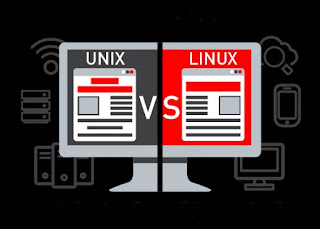How does the statement “Linux exists thanks to Unix” make you feel? Are you confused because you hear Linux users praise Linus Torvalds for his achievement with Linux every now and then but never for Unix?
Your confusion will end today because today we will be explaining what exactly Unix is and how it differs from the more famous Operating System, Linux.
What is Unix?
Unix is a proprietary Operating System that was developed by Bell Labs research center in the 1970s by Ken Thompson, Dennis Ritchie, and a number of other developers.
Its main mode of interaction is the Command Line Interface (CLI), and even though it recently has a GUI, most Unix users I know still prefer to use the CLI.
Because Unix is proprietary software, it is neither available for free nor is its source code open-source. Nevertheless, due to how much its popularity grew it began to be Licensed to different tech companies which subsequently allowed for the existence of multiple flavors.
Unix Compatibility and Distros
Unix finds most of its use in companies and institutions that employ high-end computer systems, mainframes, and mega servers to get computation done and therefore requires certain architecture specifications.
It has support for a few file systems including gps, hfs, js, bfs, vets, and zfs.
Unix has a handful of distros namely:
- AIX (IBM)
- BSD
- HP – UX
- Iris>
- Solaris
It also has some open source projects and they include:
- Free BSD
- Darwin (Apple’s version of Unix)
- OpenBSD
What is Linux?
Linux, itself, is a kernel that was developed by Linux Torvalds in 1991 based on the Unix OS as a personal project he worked on and felt he should show to other computer programmers like himself.
After sculpting the kernel after MINIX, adding driver support and a GUI, he developed it into a full-blown OS named Linux and changed the trend in computer technology worldwide.
The Linux OS was built to not just be open source but also easy to use, free, lightweight, and compatible with a variety of hardware. Initially developed to be an OS for personal computing, Linux grew in quality and capacity to the extent it began to be used in offices, servers, etc.
Linux is maintained by Linus Torvalds and a community of developers from all over the world who have volunteered to work on the open-source project free of charge. However, only Mr. Torvalds can authenticate changes made to the kernel’s source code.
Linux Compatibility and Distros
The Linux OS is compatible with a lot of file systems including xfs, ramfs, vfat, cramfsm ext3, ext4, ext2, ext1, ufs, autofs, devpts, and NTFS, to mention a few.
It has a lot more distro versions than Unix including:
- ArchLinux
- Debian
- CentOS
- Fedora
- Kali Linux
- Ubuntu
- Red Hat
These distros usually go further to have their own flavors like in the case of Ubuntu with Lubuntu and Edubuntu.
Once upon a time, Unix was the definite choice for reliable service by major enterprises around the world, but now Linux has become the most sort-out option because it is now capable of carrying out as many tasks as Unix could reliably, securely, more cost efficiently, and it is more user-friendly.
Of the world’s top 500 servers Linux powers 98%. It’s no wonder you hear Linux almost anytime you hear open source and not so much when you hear Unix. However, don’t forget, that if it weren’t for Unix and the scientists at Bell labs research center you probably wouldn’t be reading this article today.
How much do you know about the difference between Unix and Linux? Did I leave any important details out? Share your thought in the comments section below.
